“Some people say that Merlot is dying in Bordeaux but if it is on clay and blue clay Merlot will be alive in Bordeaux for the next 40 years,” says de Boüard.
Increasingly we are hearing that younger wine drinkers simply ‘do not get’ red Bordeaux. The tannins, the wood the premium price – it doesn’t add up, especially when you have to keep it for 10 years before you can pop the cork. Tasting six wines from Château La Fleur de Boüard, the estate in Lalande-de-Pomerol owned and run by Angélus co-owner Hubert de Boüard de Laforest and his daughter Coralie, you cannot help but feel that this is exactly the style of wine perfect for communicating the power of Bordeaux.
Apart from Angélus, de Boüard has fingers in many pies, consulting for 80 estates in Bordeaux alone. At Château La Fleur de Boüard he and Coralie make four wines: La Fleur de Boüard which is the main focus of today’s tasting, Le Plus, a premium 100% Merlot which was also tasted and then a second wine Le Lion, a 50/50 Merlot/ Cab Franc blend (15% oak) and a 9-strong varietals range.
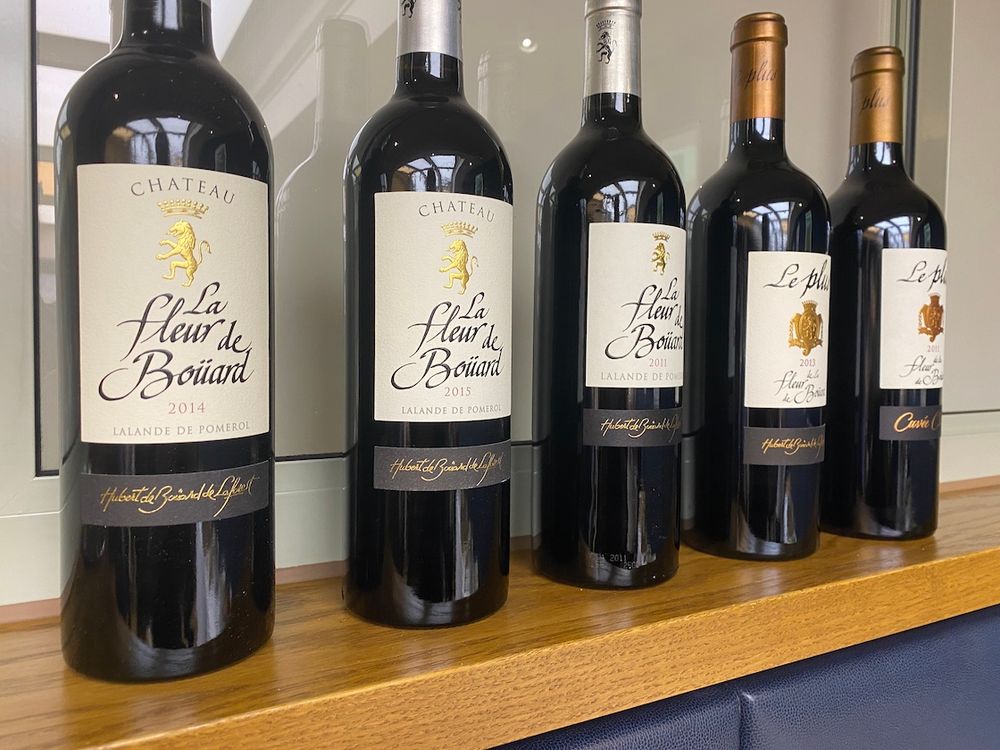
It is the La Fleur de Boüard, however, that could easily crack the young generation code. It’s a Merlot-dominant (80%) blend with Cabernet Franc (15%) and Cabernet Sauvignon (5%), aged in oak (75% new) for 18-24 months. The three vintages we tasted were all superb and the DPD price is £17 a bottle… what’s not to like.
Expect a thoroughly modern Claret with silky tannins, rich concentration and a fine texture. Black cherry, blackberry, plum and blueberry fruit mingle with flourishes of cocoa, violets, crème de cassis and smoke.
Lalande-de-Pomerol has always been a wine lover’s well-kept secret, of course, the plateaus of Néac and Pomerol where Château La Fleur de Boüard is located can turn in premium wines (especially where the Merlot sits on clay, blue preferably) at prices substantially lower than neighbouring St Emilion and Pomerol.
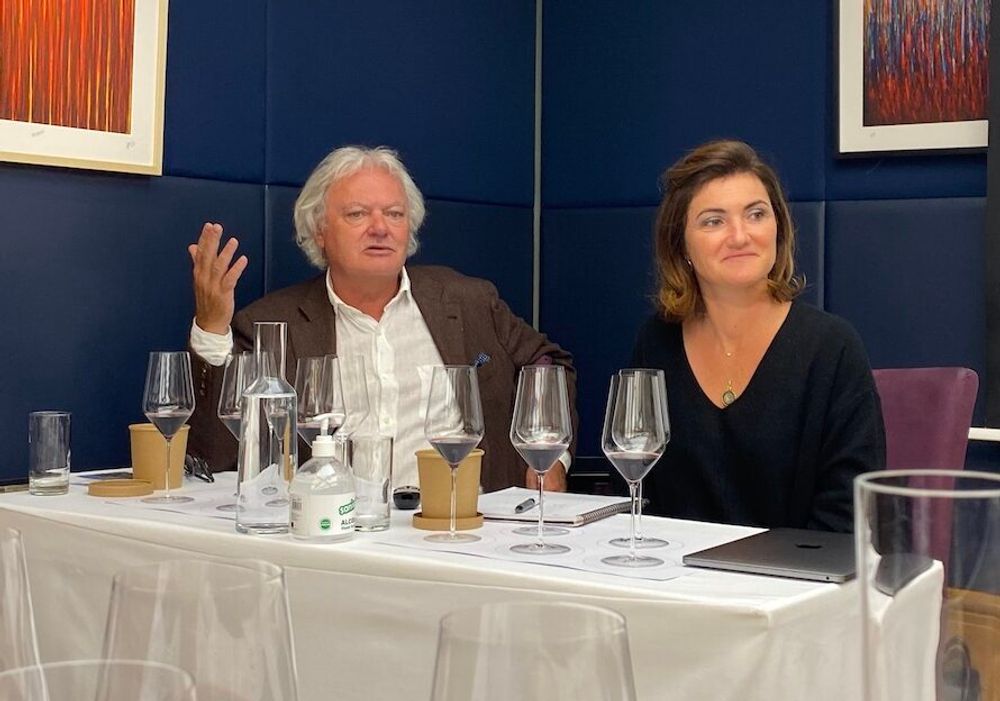
Hubert de Boüard de Laforest and daughter Coralie, 67 Pall Mall, October 2021
Hubert bought this 25-hectare property in 1998 in the belief that Lalade de Pomerol can produce wines on a par with the greatest Bordeaux appellations, buying the property from an old postman who had lovingly tended the vines on what is superb clay-rich soils.
“Blue clay is kingdom of the Merlot – not the kingdom of the Cab – it is where you achieve the best elegance,” says Hubert de Boüard, introducing the wines to a select gathering of sommeliers and press in London’s 67 Pall Mall. “Some people say that Merlot is dying in Bordeaux but if it is on clay and blue clay Merlot will be alive in Bordeaux for the next 40 years.”
Hubert de Boüard has been making headlines for the wrong reasons of late and it is to his credit that the day of the tasting is the day he got landed a €60k fine for illegally manipulating the Saint-Émilion classification system in 2012 – and he still managed to avoid the subject and keep focused on the wines in front of us.
So how were the wines tasting?
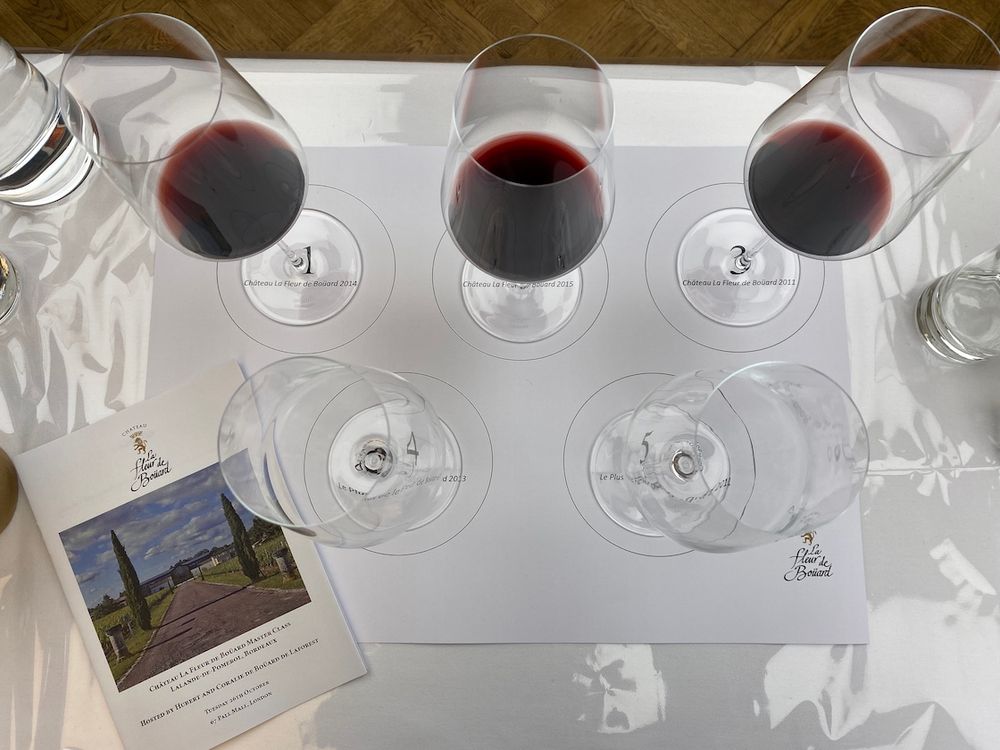
We tasted three vintages of La Fleur de Boüard – 2011, 2014 and 2015 – a Merlot-led three-grape blend that is usually about 85% Merlot with the remainder made up 50/50 of Cabernet Sauvignon and Cabernet Franc – the latter two grapes adding complexity, backbone and aromatics. With lunch we had a fourth vintage, the 2001 out of magnum. This wine spends 18-24 months in oak and is bottled without fining or filtration.
Château La Fleur de Boüard 2011
2009 and 2010 were always going to be difficult vintages to follow but the team here have done a great job with a vintage that was saved by an Indian summer, whose cool nights refreshed the wine with great balance.
The wine is a great place right now developing secondary characteristics, but still fresh as a daisy. It’s a good example of why following a winemaker is often preferable to following a vintage.
To look at the wine is medium ruby with some garnet edging; the nose is ripe, a full hit of black fruit, blackberry, cassis, with a meaty, savoury characteristic. The tannins are firm, ripe and well-integrated, the wine structured and elegant… mouth-filling. Time has been kind to the wine with the initial ripe concentration reported on release, tempered and aged well. Balance is excellent.
Château La Fleur de Boüard 2014
2014 had similar conditions to 2011 and the same fluctuations of temperature but not exactly at the same time. This wine is mature but not picking up any of the leathery secondary characteristics that the 2011 is starting to display.
Medium ruby; the bouquet offers mulberry fruit, wood, a more herbal element than 2011, with an eucalyptus, minty lift, the wine is less savoury than 2011 with more mocha and chocolate. In the mouth the wine is very light and fresh, lovely purity to the fruit, with rounded, integrated tannins, structured but balanced. The finish is quite short, drying tannins truncating the length with a tight, crispy finish and lean, unripe cherry on the tail. A great match with food, think slow-cooked French, meat or vegetarian/ fish dishes with some heft to them.
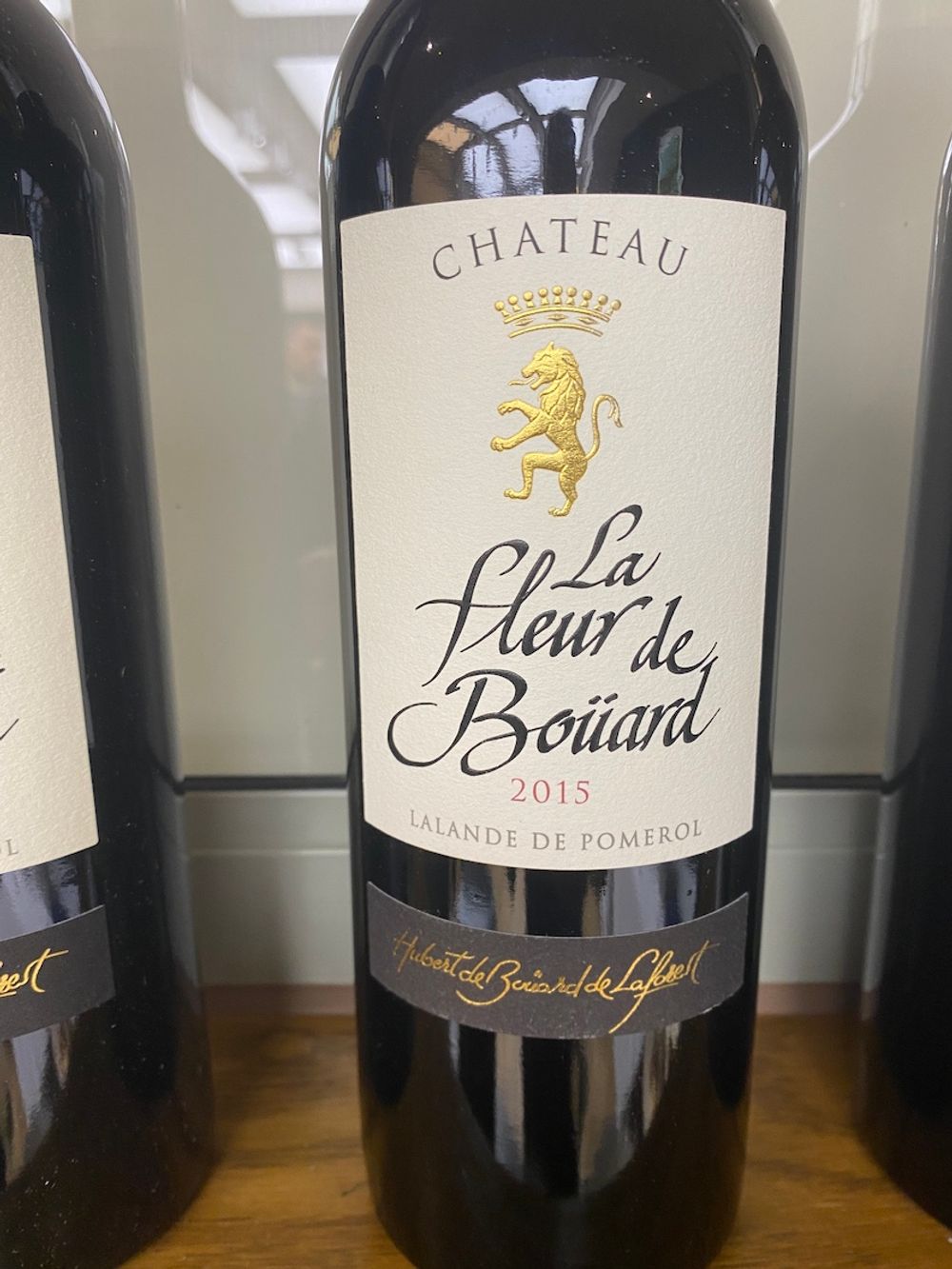
Château La Fleur de Boüard 2015
A superb ripe vintage, of course, with the wine drinking very well but with clear potential to benefit from more ageing, another 15 years at least.
Medium-bright ruby; the nose is a real ‘come on’ veering towards ripe purple fruit, violets, with a savoury quality – a touch of Marmite or roasted meat, and a hint of spice. The tannins are excellent – silky, gentle and caressing, beautifully crafted and rounded. There’s concentration and intensity with blueberries, cedar, hints of cinnamon but the acidity and structure is all there with a fabulous balance and weight on the palate, capped off with a lick of citrus on the finish. Very special.
Château La Fleur de Boüard 2001 (in magnum, tasted with lunch)
20 years on the clock and this is still ticking along very nicely. One of the first vintages of La Fleur de Boüard that exudes the freshness from the site’s clay loam soils and the family’s winemaking knowhow. It’s a medium bodied claret with good acidity that still has a bit of primary plummy fruit but mainly secondary characteristics: dried cherries, fig confiture, Sechuan pepper, leather, tobacco, mocha; finish a bit short. A 750cl bottle would need drinking up by now, but this is in terrific shape and very more-ish.
If the point needed proving that Lalande de Pomerol can produce great wines then this bottle says it right here, and outrageously good value.
Tasting two vintages of Le Plus de la Fleur de Boüard
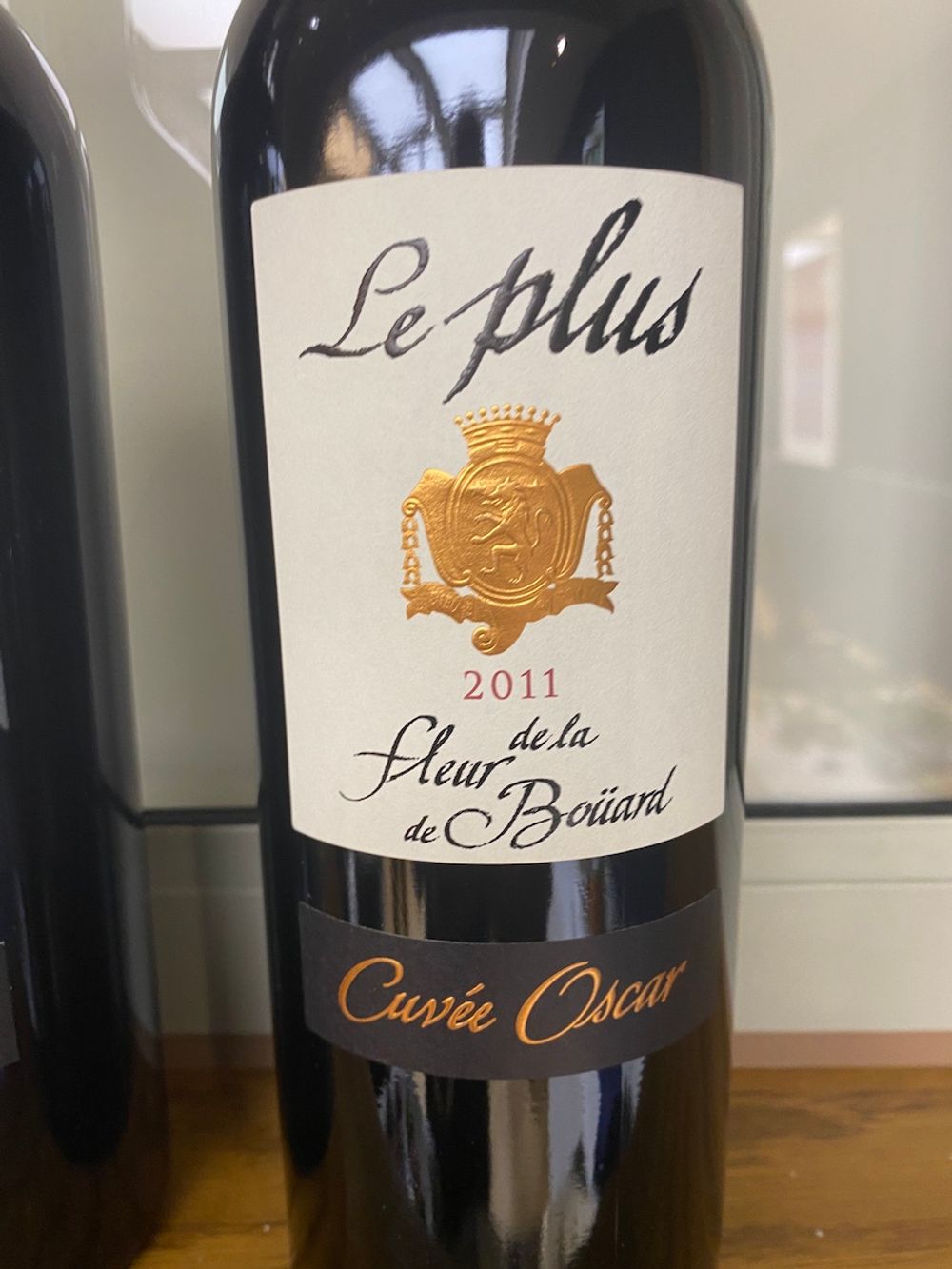
Made from the oldest (60+ years) low-yielding vines on the property, Le Plus is a 100% Merlot wine aged for 32-35 months in 100% new oak, half of that time spent on the lees with the wine not moving from the barrel at any given time, the finished wine is bottled unfiltered and unfined. The result is a lush, elegant wine with remarkable freshness and smooth tannins. One critic present questioned the lack of integration of the oak but I found that the intensity and concentration of the wine coped superbly well.
Le Plus de la Fleur de Boüard 2011
Very deep ruby red; the bouquet is laden with plum, mulberry, chocolate, earth and chalk; there’s complexity here and better definition than the 2013; the palate is fantastically dense and concentrated and it is to the team’s credit here that freshness is the first sensation. There’s a real energy to the wine, micro-fine tannins, blueberry, black raspberry and tart cherry. Seriously impressive.
Le Plus de la Fleur de Boüard 2013
Very deep ruby; So pure, deep, broody and complex, with fantastic concentration. The bouquet is more floral than the 2011, there is also a hint of wet putty; on the palate the wine is fresh, ripe and broad, good balance with similarly micro-fine tannins and an almost dry sone texture. The wine feels less fresh than 2011, but still drinking well with a black fruit skin, slightly tart mouthfeel but firm and with depth.
The wines of Château La Fleur de Boüard are imported into the UK by Mentzendorff which is a supplier partner of The Buyer. To discover more about them click here.































